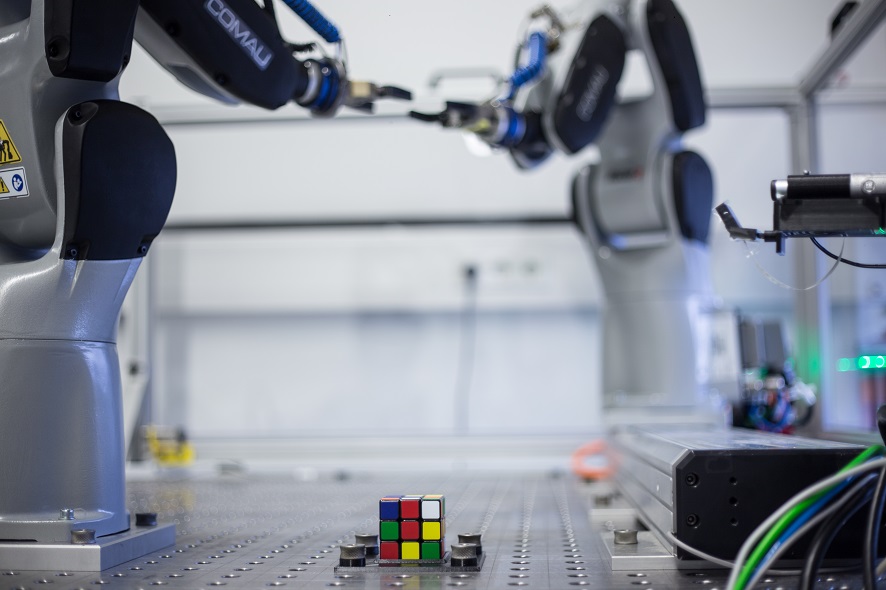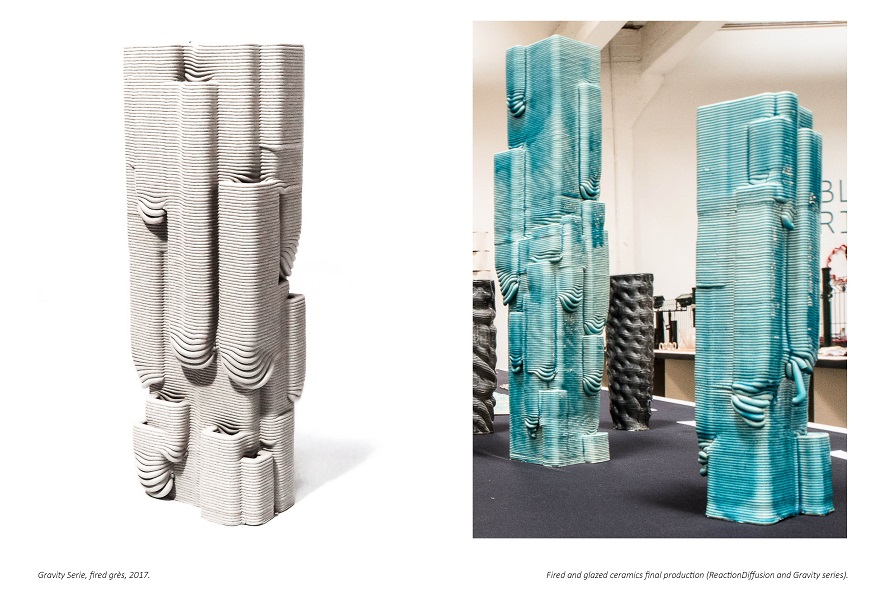“Robots are universal machines. Robot arms aren’t built to just do milling or welding. They’re conceived so that you can do anything with them,” explains Prof. Johannes Braumann, head of Linz Art University’s Robot Lab. The third installment in this exhibition series will once again showcase how the school’s undergrads are working with robots. And he’ll be exhibiting work done at partner institutions in the show at Ars Electronica. “We’re activating our entire network for the Creative Robotics exhibition. An important part of our agenda is to get the whole community involved.”
And this community is much larger than is apparent at first glance. In addition to the work going on at Linz Art University, intensive research into extraordinary applications for industrial robots is also being done at research facilities and institutions of higher learning worldwide. Appearing in Linz will be works from the Centre for Information Technology and Architecture in Denmark, the Institute for Computational Design at the University of Stuttgart, and the RWTH Aachen University’s Individualized Production in Architecture chair. One of the works from Linz Art University is a sculpture by Maria Smigielska. “She has been working for some time on cold-forming metal, and uses methods like machine learning to predict the behavior of the metal in real time,” according to Braumann.

Credit: CITA
Only a few kilometers away from Linz Art University’s Robotics Lab, there’s another site where conventional industrial robots are being deployed for rather unconventional purposes. Two robot arms work in tandem to solve a Rubik’s Cube; another one serves coffee; next to it, work proceeds on a flight simulator. Nearby, there’s a humanoid robot “hanging out” on a sort of clothes rack. Here, in the Department of Robotics at Linz’s Johannes Kepler University, the subject of research is classic industrial robotics, but the applications seem rather out-of-the-ordinary nonetheless.

Credit: Vanessa Graf
This is due to the fact that confronting systems with creative questions often gives rise to complex specifications that, at some later point, could even become industrially relevant, department head Andreas Müller poined out. Nevertheless, research always has utmost priority: How can robots be deployed in ways that make sense? The possibilities are almost unlimited. “A robot is nothing more than a normal tool,” said Müller. “But it’s interactive, it’s adaptive, it can react to its environment and interact with an audience.” These very traits will be brought out by the Creative Robotics exhibition. JKU will be setting up a demonstration cell with two robots that sometime dance with each other, sometimes solve a Rubik’s Cube, and always make an effort to do so faster than human onlookers.

Credit: Andrea Graziano
In Müller’s opinion, interactions among robots and human beings will become more frequent in the future. “Robots are already ubiquitous. They’ll increasingly come into use in everyday life.” But don’t users need a tremendous amount of background knowledge to operate them—and especially industrial robots? Johannes Braumann is convinced that that’s not the case. “Our primary aim is to make this technology more easily accessible.” But be that as it may—robots are already designed to be relatively easy to use—in factories, for instance. Even artists at Linz Art University need only a brief introduction for their work in the Robotics Lab. Some even have their own robots at home. “You can search for robots on ebay and you’ll find applications costing a few thousand euros that can do a pretty decent job,” Braumann smirked.

Credit: Fashion & Technology, Kunstuniversität Linz
Such proliferation of robots in everyday life raises the question of how this will be received by human beings. After all, anxiety is widespread, at least as manifested in popular culture. Will robots replace us someday? “Definitely!” Braumann is sure of that. “But ultimately, you always have to consider the process sequence, and here, the creative person is in the foreground.” In fact, the term “robot” is derived from robota, the Czech word for work. “Precisely what we’re complaining about now was originally the goal—for things to do our work for us,” Andreas Müller points out. “The question remains—doesn’t this open up the possibility for us to do other work?”
The exhibition “Creative Robotics” is on display at Ars Electronica Center starting May 9, 2018. The big opening starts at 6:30 PM, May 9, 2018, and is free of charge. Find out more on our website.
To learn more about Ars Electronica, follow us on Facebook, Twitter, Instagram et al., subscribe to our newsletter, and check us out online at https://ars.electronica.art/news/en/.
